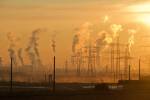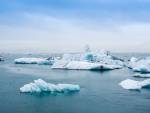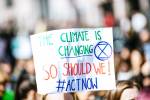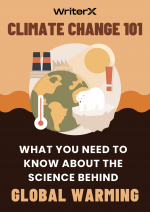Climate Change 101: What you need to know about the science behind global warming
Global warming is real, it’s happening, and it’s caused by us. It’s happening because we’re producing more greenhouse gases like carbon dioxide and methane, and those gases trap energy from the sun. That energy makes the Earth warm. But we can stop global warming if we keep emitting greenhouse gases. So, what can you do to help?
Climate Change: What is it and what causes it?

Climate change is a long-term trend in Earth’s temperature that is caused by the accumulation of carbon dioxide and other human-produced greenhouse gases in the atmosphere. The gases trap energy from the sun, causing the Earth’s atmosphere to warm. This warming leads to changes in weather patterns, ocean currents, and plant growth, which can affect human populations and ecosystems. The main drivers of climate change are greenhouse gas emissions from human activities, such as burning fossil fuels. Emissions from land use (forest clearing, agricultural practices) and land use change (policing of deforestation) are also important contributors. Climate change is expected to increase the intensity and frequency of extreme weather events and could lead to major displacement of people, especially if global warming increases sea levels. In order to address climate change, governments need to develop policies that reduce emissions from human activities while promoting sustainable economic development.
The Effects of Climate Change: What are the most significant consequences for humans?

Effects of Climate Change on Agriculture
As the Earth warms, the climate will continue to change in ways that will impact agriculture. Some of the more significant changes are increased frequency and severity of storms and hurricanes; lengthening of growing seasons; changes in snowpack, rainfall, and drought patterns; and a changing global ocean temperature and chemistry. Each of these has potential impacts on agriculture, either directly (through changes in production and prices) or indirectly (through changes in food choices and dietary patterns). Changes in precipitation can lead to more flooding or less water available for use by plants. Drier conditions can cause crop pests and diseases to spread more easily, leading to higher pesticide use and costs. Warmer temperatures mean faster spoilage of food items, making food storage more challenging. Changes in agricultural production could have major economic consequences, given that agriculture is one of the world’s largest employers. Overall, climate change will have a significant impact on agriculture both directly (through changes in production) and indirectly (through changes in food choices and dietary patterns). It is essential that farmers and agricultural policymakers understand these effects so they can make informed decisions about how to adapt to changing conditions.
Effects of Climate Change on Infrastructure
Climate change will have multiple effects on infrastructure, some of which are already apparent and others that will become more apparent in the future. For example, increased flooding and coastal erosion will damage infrastructures such as roads and bridges. Extreme weather events, such as hurricanes and wildfires, also can damage infrastructure. Climate change also will cause more frequent and intense wildfires, increasing the risk of wildfire-related damage to infrastructures, such as homes, businesses, and public facilities. In addition, climate change will increase the demand for water resources, leading to increased health risks from water shortages. Finally, climate change will increase the cost of goods and services due to changes in weather patterns.
Effects of Climate Change on the Economy
Climate change has the ability to negatively affect the economy in a variety of ways. The most immediate concerns are related to increased flooding, more severe weather events, and slower crop growth. More broadly, climate change is also expected to reduce global economic output by an estimated 2.9 percent each year by 2100. Many countries will be particularly hard hit, including the United States, China, and Mexico. The costs of climate change are already being felt around the world, with countries such as India and China dealing with extreme droughts that have caused hundreds of thousands of deaths. The impacts of climate change will only become more severe over time, leaving society and the economy further behind.
Effects of Climate Change on Human Health
Climate change is already impacting human health, with increased heat waves and floods making conditions more uncomfortable and hazardous for people. Limited access to clean water, food, and escape routes from extreme weather conditions can lead to health problems such as diarrhoea, malaria, and respiratory infections. More frequent and intense natural disasters can disrupt social networks and leave communities isolated, increasing the likelihood of infectious disease outbreaks. The increasing incidence of various environmental pollutants in air, water, and soil can also cause health problems including cancer. In some cases, climate change may also worsen existing health conditions by amplifying dust storms or hurricanes that damage ecosystems or leave communities without basic necessities such as clean water or medical care. Interventions that reduce greenhouse gas emissions could improve public health by reducing air pollution, providing access to safe drinking water, and aiding in the prevention of infectious diseases.
Solutions to Climate Change: What are the most effective ways to address climate change?

There are a variety of ways to address climate change, and the most effective way to reduce greenhouse gas emissions depends on the particular situation. Some potential solutions include reducing energy consumption, improving energy efficiency, planting more trees, and creating new technologies. Others involve legislation and regulation to encourage green energy use, and subsidies for clean energy sources. Increasing the output of renewable energy is another option, as is developing new storage technologies that can hold carbon dioxide for long periods of time. Any solution to climate change will require a combination of approaches, and it will be important to evaluate each one carefully in order to find the most effective way to address the problem.
Tips for Saving Money on Energy Costs While Still Enabling Climate Change Prevention and Adaptation Strategies
One way to save money on energy costs while still enabling climate change prevention and adaptation strategies is to use energy-efficiency measures. For example, if you can unplug your electronics when you’re not using them, or turn off lights when you leave a room, you can save a lot of energy. It’s also important to consider your energy usage during peak hours when the grid is most stressed. Turning off gadgets, using energy-efficient appliances, and scheduling regular power outages can all help reduce your energy bill during peak hours. And if you live in an area that experiences hot weather, installing air conditioning can also help reduce your energy bill.
Ways to Reduce Your Carbon Footprint: What small things can you do to help reduce atmospheric CO2?

Offset your emissions: Ways to offset your CO2 emissions
There are many ways to offset your CO2 emissions, each with its own benefits and drawbacks. Here are a few examples:
- Plant trees. Trees absorb carbon dioxide and create oxygen, which helps combat climate change.
- Buy carbon credits. Carbon credits can be bought and used to offset the CO2 emissions of a specific entity or project.
- Install solar panels or wind turbines. These technologies produce renewable energy that can be used to offset the CO2 emissions of your home or business.
- Install community solar gardens. This is a model in which individuals, businesses, or municipalities install solar panels in common areas, sharing the cost and benefits of the installation.
- Donate money to environmental organizations. They can use it to finance projects that reduce CO2 emissions, such as tree planting or wind turbine construction.
Incentivise renewable energy sources in your area (For Government Authorities)
Renewable energy sources are becoming an increasingly popular choice for those looking to reduce their carbon footprint. Incentivising renewable energy sources in your area can help to increase the use of these clean energy options and help reduce greenhouse gas emissions. There are a number of ways that you can incentivise renewable energy sources in your area. For example, you could offer tax breaks or subsidies to individuals or businesses who install solar panels or wind turbines. You could also create incentives for people to use electric vehicles, or to invest in green infrastructure such as rooftop solar panels. Whatever approach you take, make sure that it is tailored specifically to your region and community.
Resources for More Information: Where can you find more information on climate change?
There are many sources of information on climate change. Some places to start include the EPA’s website, climate.gov, and the BBC’s website. Another good source of information is The Climate Answers Book, published by the nonprofit group CDP. The group has produced a variety of guides and fact sheets on a variety of topics related to climate change. Finally, you can check out individual studies and reports on climate change to get more in-depth information.
Conclusion
Now that you have a basic understanding of climate change and its science, it’s time to learn about the consequences of global warming. The effects of climate change can vary depending on where you live, what type of climate change we are experiencing, and how much carbon we are emitting into the atmosphere. Regardless of the severity of the consequences, there is no question that global warming is happening and that we need to do something about it.





